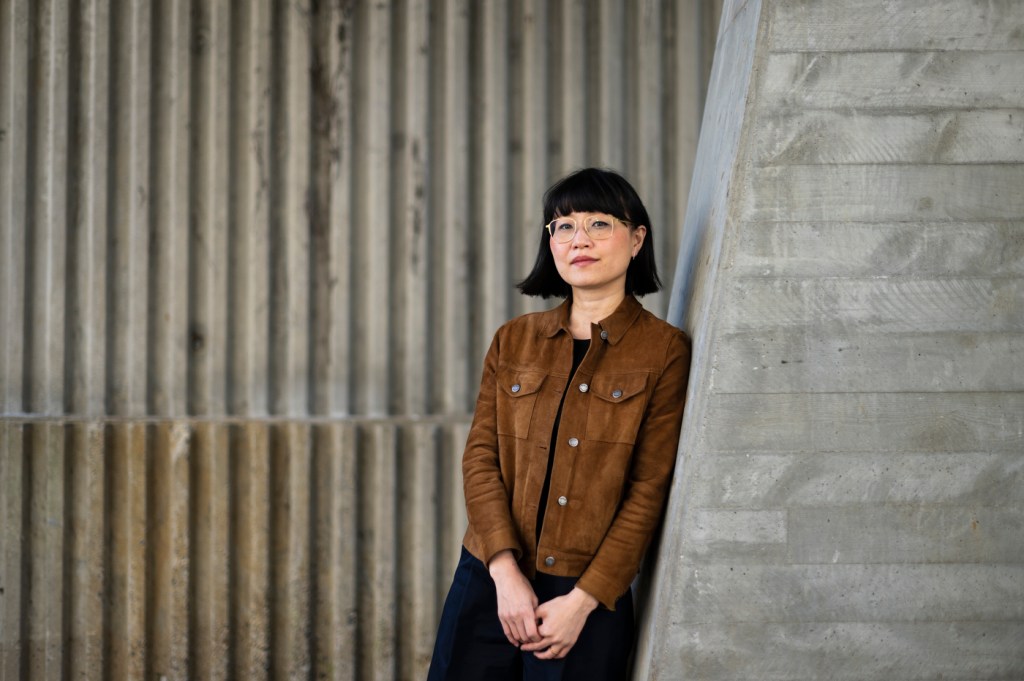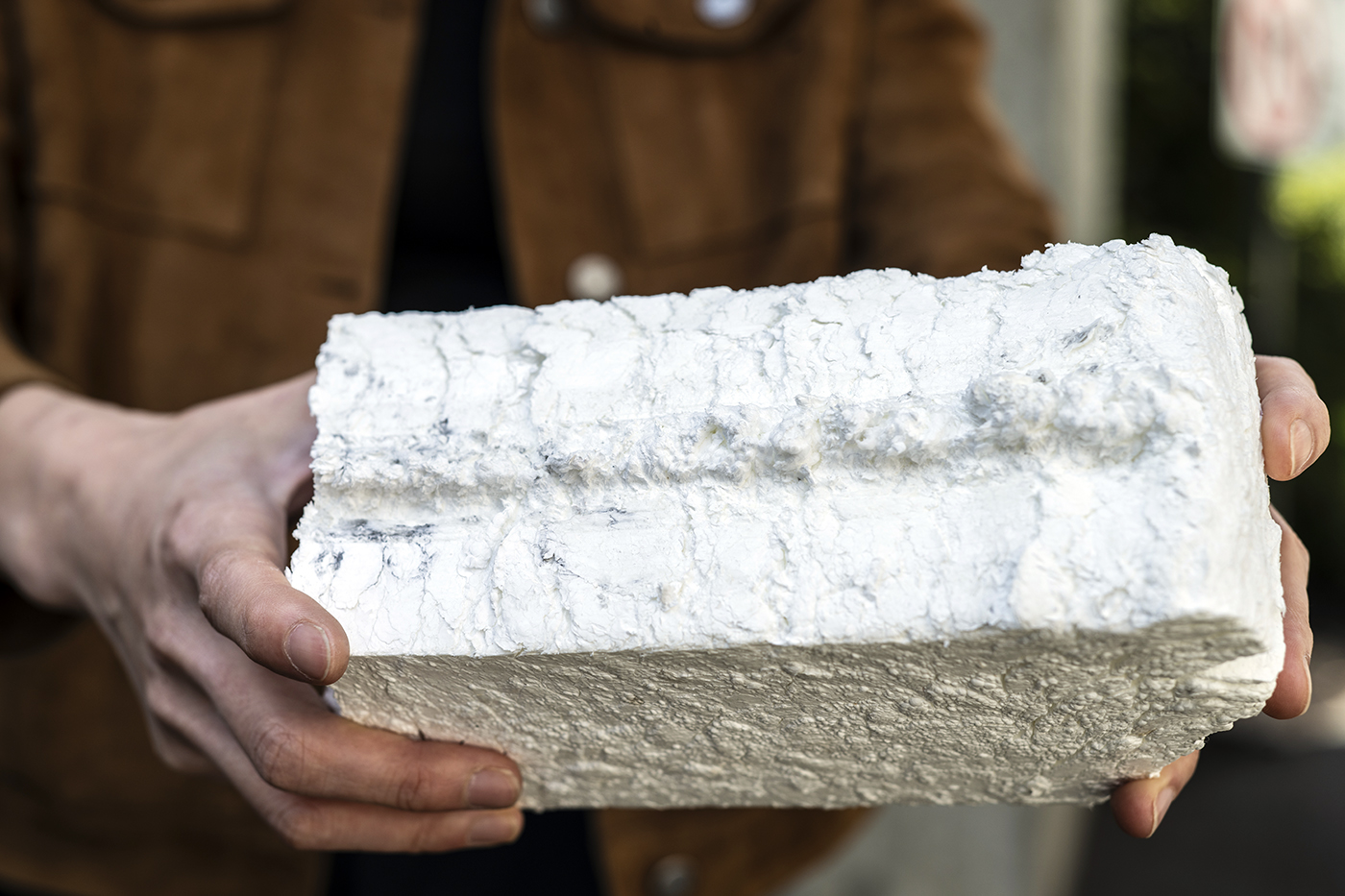Northeastern professor to showcase installation at 2023 Biennale Architettura in Venice

The trick to becoming invisible is to hide in plain sight.
That’s what Ang Li, an architect and assistant professor of architecture at Northeastern University, has learned when it comes to the world of plastics and petroleum-based products. Now, Li is shining a spotlight on the invisible yet omnipresent plastic products that are filling modern waste streams through a new installation that will appear at the internationally renowned 2023 Venice Architecture Biennale.
“We’re all familiar with the statistics you see in conversations around waste. Usually, it’s a kind of quantitative analysis or data analysis … but these numbers feel very abstract to the average reader,” Li says. “With a lot of this work there’s a project of making the invisible visible, which I think is what a lot of architects are interested in doing.”

The Biennale, which runs from May 20 to Nov. 26, takes place every other year, alternating with an art-focused Biennale, and brings together architects and designers from across the globe for a months-long exhibition. Countries are represented by national pavilions composed of multiple architects who create a collection of work based around their interpretation of a general theme. Although it lacks the competitive focus of the athletic Olympics, the Biennale does reward one pavilion with the Golden Lion.
This year’s overarching theme was “Laboratory of the Future;” the U.S pavilion’s specific theme is “Everlasting Plastics.”
“It looks at the cultural and environmental legacies of petroleum-based products, or plastics, in the built environment and the role of these materials in shaping contemporary building practices, contemporary spatial imaginaries,” Li says.
Li was a natural fit for this year’s competition. The Biennale installation Li and two Northeastern students will unveil at the 2023 Biennale is inspired by the plastic-based work Li had previously done in Chicago.
Her work focuses on traditional building materials like concrete, lumber and brick alongside plastics and materials that aren’t often considered building materials. She not only finds new applications for these recycled or reclaimed materials but frames the materials in a way that visualizes how these materials move within supply chains, ecosystems and waste streams and how the value they have shifts throughout the process.
One of the goals of the U.S. pavilion was to move away from traditional sustainability narratives that label materials along a binary, as either “good” or “bad.” Instead the work of Li and the other American architects aim to interrogate the building practices, consumption practices and values that plastics have encouraged.
The room-scaled installation Li and her students have designed for the Biennale focuses on expanded polystyrene (EPS) foam, a lightweight plastic material. EPS is used everywhere in modern construction––from large scale landscaping projects to insulation––yet most people are not familiar with it. That’s by design.
“Its value is that you can’t see it,” Li says.
EPS foam is made out of 98% air, making it lightweight, easy to move and appealing for large scale or fast moving construction. Those qualities have helped it become a ubiquitous part of construction projects and “fuel an expansionist way of building,” Li says. However, those same qualities also make it difficult to break down and recycle.
It takes up a lot of space to store or transport, and, because of how lightweight it is, it’s not worth much in second hand or commodity markets. Li says many recycling plants aren’t even willing to take EPS and that municipal recycling programs throughout the country have banned the material.
By using EPS sourced from recycling centers in New England, Li and her team have constructed a massive installation using condensed EPS blocks, putting the material front and center. The scale is intentional. It aims to convey the sheer volume of EPS in the environment––EPS is estimated to account for 30% of U.S. landfills by volume––while also giving almost inconceivably large ideas and problems a tangible, physical form.
“[EPS] had all these things that we didn’t think were possible before, and now we understand it as a necessary evil,” says Isabella Greco, a senior architecture student who assisted with the installation. “This piece is not looking to condemn or glamorize it, just to understand it in the new context of our historical timeline.”
Designing and constructing a large scale installation an ocean away from its venue presented some challenges. Li, her students and fellow U.S. pavilion architects had to use 3D models, drawings and measurements of the Biennale building to fine tune the dimensions of their projects.
It also means Li has to ship her EPS foam blocks across the Atlantic to Italy, an apt reminder of the global reach these products have.
“If we look back at international biennials and expos from the mid-20th century, the goal was to bring American products or materials to put on display in a very glorified way,” Li says. “A lot of this is also about saying, ‘What is an American export that we now send out in large quantities?’ and to even address some of the more global storylines about plastic waste.”
Cody Mello-Klein is a Northeastern Global News reporter. Email him at c.mello-klein@northeastern.edu. Follow him on Twitter @Proelectioneer.





